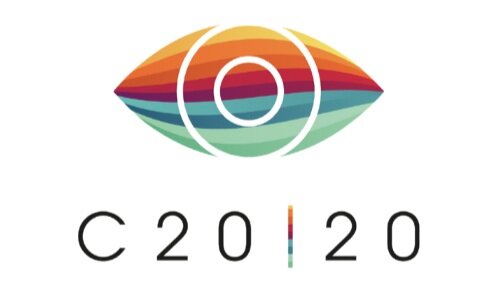
Materials Development
The C20/20 team has expertise covering all stages of materials development and characterization and we are able to aid you along the way.
Monomer Development & Synthesis
Our team has extensive experience in the development of polymers and materials used in the biomaterials field, including those used for drug delivery. In particular, our group has extensive experience using acrylic polymers polymerized using free-Radical (UV and thermal) and controlled radical polymerization techniques (i.e. RAFT and ATRP) and silicone chemistry. We have the knowledge to help others to develop new polymers for a variety of applications.
Polymer Design
Our team has a wealth of experience in the development of new polymers for a variety of applications in the biomaterials field. We can help design custom monomers and polymers with the desired properties or take it further and develop and execute the synthetic procedures to make the desired polymer (i.e. surfactants, block co-polymers, etc.). We will work with you and everything can be customized to exactly what is needed.
Material Modification
Our team has a wealth of experience in the surface and bulk modification of materials for a variety of applications in the biomaterials field. We can help design new polymeric materials or modify existing materials to impart desired properties. We can also take it further and develop and execute the synthetic procedures to make/modify the materials for you. We will work with you and everything can be customized to exactly what is needed.
For example, we have publications outlining the following examples of these modifications:
- The incorporation of PEG and HA to bulk and surface of hydrogel and silicone hydrogel to improve water content and wettability
- The incorporation of PBA to bulk and surface to improve mucoadhesion properties of materials
- Adding additional polymers through copolymerization or physical entanglement to increase drug interaction and improve sustained release
- Tethering drugs and compounds to the materials to facilitate extended release or prolonged effect
Polymer & Material Characterization
Whether working with an existing polymer/material or something new, we have a wealth of experience in characterizing polymers and materials. Our strength is not only conducting these tests skilfully, but also having expertise to analyze the test data and correlate the results to the material development strategies to provide valuable consultations. Below are examples of characterization techniques we perform regularly:
Polymers:
- Find the average composition and chemical structure
- Find the molecular weight and dispersity
- Polymer behavior and stability at different temperatures
- For solutions of surfactant we can find the size of aggregates the critical micelle concentration
- Determine the degradation profile for the polymer
- Determine Tg (glass transition temperature), LCST (low critical solution temperature), melting point, and decomposition temperatures etc.
Materials:
- Measure surface and bulk properties such as wettability, composition, morphology, response to variations in temperature, modulus, elasticity, transparency, water uptake, oxygen permeability
- Measure mechanical properties including modulus, tensile strength and tear strength
- Determine particle size and distribution
Contact Lens Material Synthesis and Characterization
In line with current contact lens manufacturing technologies, C20/20 is able to synthesize different model contact lens materials using various UV free radical polymerization and crosslinking techniques to impart the lens properties you need. We will work with you for your conventional hydrogel or silicone hydrogel needs, as we can accommodate both flat lenses in material modification stage and molding of lenses with curvature in actual application tests.
We work closely with your team to ensure the correct mechanical properties, transparency, water content, modulus, etc. for your materials. We test this using custom-made small cuter and small clamps to hold such tender and small size contact lens specimens. We can also test oxygen permeability and modify properties to improve this as needed for your lenses. Our team understands that a balance must be reached between these parameters when designing or modifying a contact lens for a particular application.
Our facility boasts a suite of contact lens characterization and evaluation tools listed in ISO18369-4 including extractable using Soxhlet extractor, oxygen permeation test using polarographic method (Dk testing), refractive index and water content tests. In addition, transparency ranging from 400-800nm can be measured using UV-VIS spectrophotometer. The water contact angle of contact lens surface wettability characterization can be conducted using a goniometer on site. Our team has also developed special techniques for precise lipid and protein adsorption quantification using a radiolabeling method.Protein distribution throughout the bulk lens can be also visualized through confocal microscopy.
Troubleshooting/Support
We are happy to consult and provide support to help troubleshoot synthetic challenges, difficulties in characterizing materials or help with data analysis. The combined and varied experience of our team members contain a wealth of knowledge and are up to any challenge.
Monomer Development & Synthesis
Use current Biomaterials Synthesis and Preparation Page
Polymerization techniques (RAFT, ATRP, Free Radical)
Polymer types (acrylates, silicones)
Polymer Design
It all begins with an idea. Maybe you want to launch a business. Maybe you want to turn a hobby into something more. Or maybe you have a creative project to share with the world. Whatever it is, the way you tell your story online can make all the difference.
Material Modification
Highlight bulk and surface modification
Polymer & Material Characterization
Use existing Contact Lens Material Preparation and Testing Page
Property Test
Mechanical test including modulus and tear strength
Water content measurement
Water contact angle test for surface wettability
Quantification of extractable using soxhlet extraction method
Oxygen permeation
Surface chemistry characterization (ATR-FTIR and XPS)
Trouble-Shooting/Support
It all begins with an idea. Maybe you want to launch a business. Maybe you want to turn a hobby into something more. Or maybe you have a creative project to share with the world. Whatever it is, the way you tell your story online can make all the difference.





